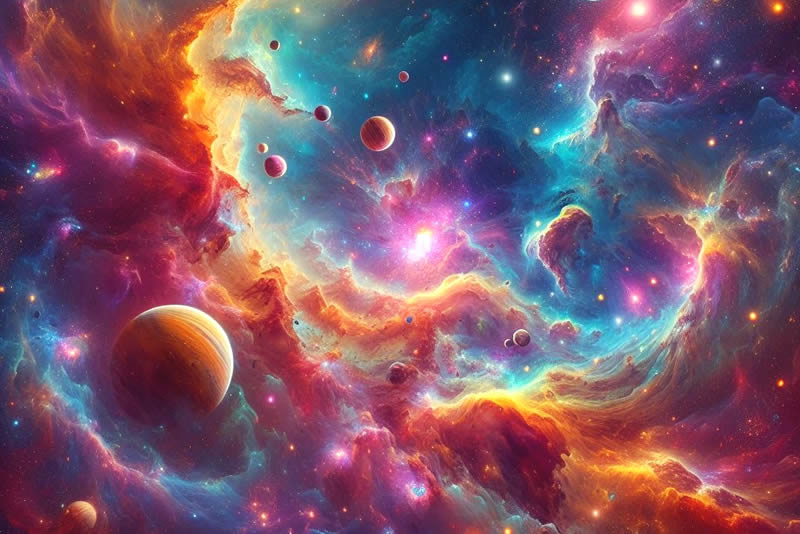A group of Japanese astrophysicists has discovered a connection between the destruction of hydrocarbon dust and the evolution of galaxies. The study, based on an analysis of data from 138 galaxies, showed that the aliphatic components of hydrocarbon dust are destroyed more quickly under the intense radiation and shock waves characteristic of active stages of the life of galaxies.

Image source: Copilot
Hydrocarbon dust is one of the main components of interstellar dust and consists primarily of polycyclic aromatic hydrocarbons (PAHs) and aliphatic hydrocarbons. Although scientists suspect that this dust is exposed to interstellar radiation and shock waves, the detailed mechanisms of these processes have not yet been fully understood.
In a study reported by Astrobiology.com, scientists from the Japanese astronomical community analyzed the relationship between the luminosity emitted by hydrocarbon dust and global infrared luminosity (LIR) for 138 galaxies. Using 2.5-5 µm near-infrared data from the AKARI space telescope, they determined the luminosities of aromatic hydrocarbons at 3.3 µm (Laromatic) and aliphatic hydrocarbons at 3.4-3.6 µm (Laliphatic ).
In addition, based on photometry data produced by the AKARI, WISE and IRAS telescopes, models of the spectral energy distributions of galaxies were built, which made it possible to estimate their total infrared luminosity and radiation field intensity.
The analysis showed that galaxies with higher infrared luminosity exhibit a lower ratio of aliphatic to aromatic luminosities. An anti-correlation was also discovered between this ratio and the intensity of the radiation field. It is noteworthy that low values were observed mainly in galaxies undergoing mergers, which may indicate that in such galaxies aliphatic components are destroyed faster than aromatic ones.
The results showed that the hydrocarbon dust is presumably decomposed by shock waves and radiation during galactic mergers, and the luminosity ratio of the aliphatic to aromatic components is likely reduced in such extreme interstellar conditions because the aliphatic components are chemically weaker than the aromatic components.
The study makes an important contribution to understanding the evolution of the interstellar medium and the processes occurring in galaxies at different stages of their evolution. Further observations and theoretical work will help clarify the mechanisms of hydrocarbon dust processing and their role in the evolution of galaxies.